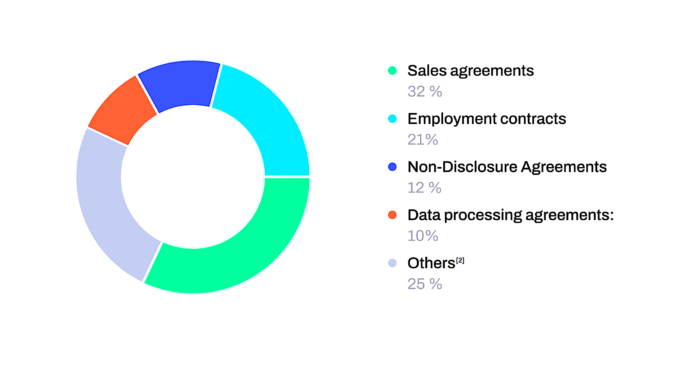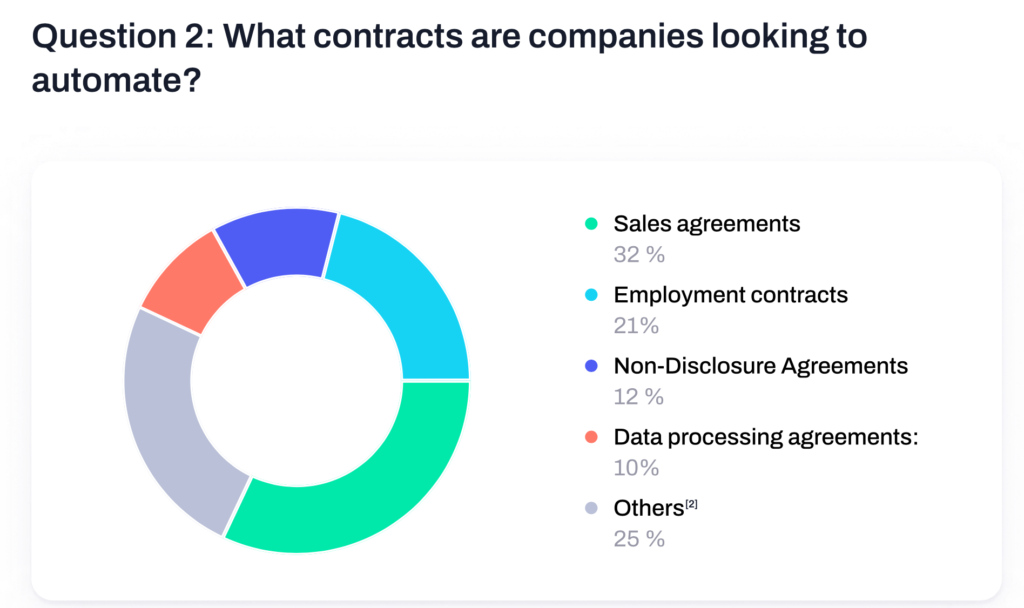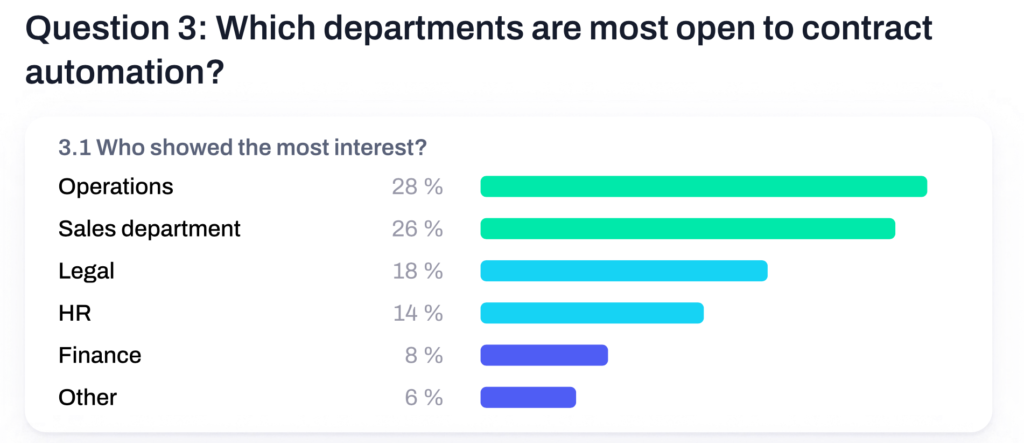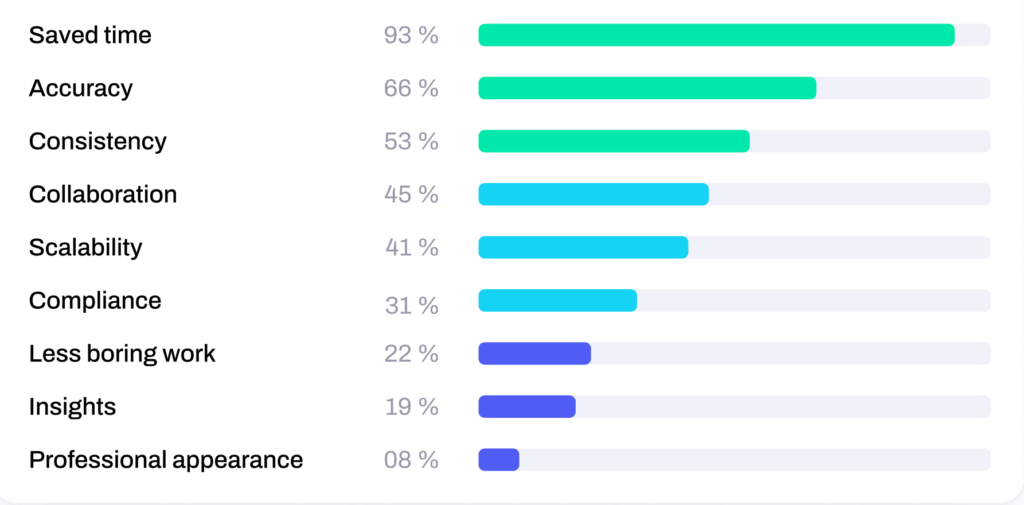
A new survey has found that just four types of contract dominate doc automation, at least for small to medium size businesses (SMBs). The report, which used feedback from almost 7,000 companies, also found that legal was only the third-most likely department to drive the use of doc automation.
According to Contractbook‘s Contract Automation Market Survey, the top four doc automation targets for SMB companies across North America and Europe were: sales agreements at 32%; employment contracts at 21%; NDAs at 12%; and data processing agreements at 10%; followed by a mix of others. This remainder covered a wide range, they said, from consent forms to SOC2 data security documents, and many other niche needs.

It was also interesting to see that the legal teams – albeit probably very small ones, perhaps even just one or two people, as the companies were SMBs – were not the main group driving the automation of contracts. The team driving this was the company’s central operations group, i.e. the people reporting to the COO.
Second was sales, and then third was legal, followed by HR and finance. Only 18% of those driving automation were in the legal team, compared to 28% in operations.

This is noteworthy as it suggests that if we class contract automation as ‘legal innovation’, then this change management process is often originating in other parts of the business.
Moreover, the drivers behind this are not legal issues primarily, but good old-fashioned demand for efficiency, with 93% reporting ‘saved time’ as the main reason to automate.
Compliance, i.e. an area that pertains directly to legal needs, came a lowly 6th place, with just 31% mentioning this. Which raises the question: have legal tech companies that sell into corporates been talking to the wrong people….?

As mentioned, this is covering the SMB market, but SMBs represent a huge slice of all companies on the planet so the results are certainly useful.
The legal team is in there, in the middle of all of this, presumably focusing on areas such as compliance, but it’s not always leading the way.
Again, this could be because a small legal team in a medium size organisation is so focused on keeping pace with legal issues as they arise, that they haven’t got too focused on driving efficiency yet. I.e. even though they’d benefit from it, they are so occupied it takes the sales or central operations groups to really drive efficiency change across their work.
It’s also interesting to see that ‘insights’, i.e. using automation as a means to help leverage contract data at the point of creation, is very low as a driver, at just 19%.
Standardisation Opportunity
One last point here is that if there are mainly four types of document that dominate this space, then the need for standardisation would appear to be even greater.
We already have the oneNDA project that has pioneered the standard NDA (and is now expanding upon this), but presumably there is room to create standards across the other needs as well – while still leaving plenty of room to make bespoke the parts of the document that relate specifically to one type of company or sector.
2 Trackbacks / Pingbacks
Comments are closed.